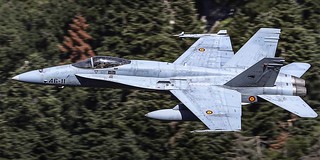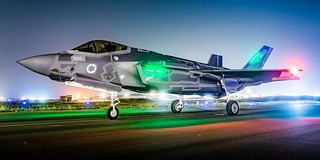Plus Ultra: the great feat of the first Spanish flight that managed to cross the Atlantic
February 10 is a day of glory for Spanish aviation, which takes us back to the year 1926 and the great feat of the seaplane named Plus Ultra.
In the first quarter of the 20th century, Spain was experiencing moments of anxiety. The loss of the Spanish overseas territories was still close with the Disaster of 1898. Spain was bleeding to death in the Rif War, where it had suffered the Annual Disaster in 1921. Faced with the discouragement caused by these historical episodes, an intellectual current began to articulate to to elevate Spain again, and as part of it came a project to cross the Atlantic in a single plane, uniting Spain and Latin America by air.

The pioneers of transatlantic flights
This initiative had inspiring events such as Albert Read's first transatlantic flight aboard a US Navy Curtiss NC-4 seaplane in 1919, the year in which the British John William Alcock and Arthur Whitten Brown also made the first flight between Nova Scotia (Canada) and Ireland. In addition, the Portuguese Gago Coutinho and Sacadura Cabral had made the first flight over the South Atlantic in 1922 between Lisbon and Rio de Janeiro.

The German seaplane chosen for the flight of the 'Plus Ultra'
In 1925, with more than a year to go before Charles Lindbergh made the first non-stop flight between New York and Paris aboard the Spirit of Saint Louis (1927), the Military Aeronautics Service of the Spanish Army and the Spanish Navy (then the Air Force did not yet exist, founded in 1939) began to make preparations for a Spanish transatlantic flight, which would be carried out with a Dornier Do J Wal seaplane, from German manufacturing and already used by then by the Spanish Military Aeronautics.

To carry out this feat, a specially adapted Wal was bought, with the M-MWAL license plate and which was baptized with the name "Plus Ultra" (Beyond, in Latin), a motto historically linked to Spain. Significantly, although the company that made the plane was German, it had to be manufactured in Pisa, Italy between June and November 1925, due to the restrictions imposed on Germany by the Treaty of Versailles after World War I. World. The aircraft had two 450 HP Napier Lion tandem engines, with which it was capable of reaching a speed of 185 km/h, with a flight ceiling of 3,300 meters and a range of 3,000 km. Its wingspan was 22.5 meters and the fuselage was 17.25 meters long. Its tanks had a capacity for 3,900 liters of fuel.

The crew of the 'Plus Ultra'
The crew of the plane would be Commander Ramón Franco (of the Army Infantry Weapon, who would be the pilot), Captain Julio Ruiz de Alda (of the Army Artillery Weapon , as a navigator), Lieutenant Juan Manuel Durán (of the General Corps of the Navy and one of the pioneers of Spanish naval aviation) and Corporal Pablo Rada, as a ship's mechanic.

A flight in seven stages between Palos de la Frontera and Buenos Aires
The "Plus Ultra" took off on January 22, 1926 from Palos de la Frontera (Huelva) , the same town from which the three ships on Columbus' first voyage set sail on August 3, 1492, which culminated in the Discovery of America. The plane made six stops on its ocean crossing, supported by the Spanish Navy: Las Palmas de Gran Canaria (after flying 1,300 km), Praia (Cape Verde, after a flight of 1,745 km; Lieutenant Juan Manuel Durán disembarked there, due to the need to lighten the weight of the plane), the islands of Fernando de Noronha (Brazil, after a journey of 2,305 km, a a very long distance for an aircraft of that time), Pernambuco (Brazil, after 540 km), Rio de Janeiro (Brazil, after a flight of 2,100 km) and Montevideo (Uruguay, after flying 2,060 km).

Finally, on February 10, 1926, the "Plus Ultra" arrived in Buenos Aires, after covering the 220 km that separated the Uruguayan capital from the Argentine capital. On the banks of the Río de la Plata, where the plane landed at 12:27 local time, the Spanish aviators received a warm welcome, being cheered by thousands of Argentines. Such was the expectation generated in Buenos Aires by the arrival of the Spanish seaplane that many streets of that populous city were clogged by the influx of people who came to see it. The "Plus Ultra" had covered a distance of 10,270 kilometers during 61 hours and 44 minutes of flight.

The 'Plus Ultra' today
Although the initial idea was to return to Spain with the plane, King Alfonso XIII decided to donate the "Plus Ultra" to Argentina, so his crew had to return to Spain by boat. The plane was sent to the "Enrique Udaondo" Provincial Museum Complex in Luján, where it is still on display today. It has returned to Spain on two occasions: in the 1960s, to be exhibited at a fair held in Madrid, and in the 1980s, to undergo a restoration process, after which he returned to Argentina in 1988. A replica is on display at the Cuatro Vientos Air Museum in Madrid.

The YouTube channel Gestas de España has published today an interesting video recounting the story of that first Spanish flight over the Atlantic (the video is in Spanish, you can activate the automatic subtitles in English in the bottom bar of the player):
---
Main image: Ejército del Aire.
|
Don't miss the news and content that interest you. Receive the free daily newsletter in your email: |
- Most read
- The flight between mountains of Spanish EF-18 fighters in the 'Mach Loop' of Greece
- Eurofighter vs F-35: the opinions of professional pilots on these advanced fighters
- Israel releases photos of its nuclear-capable F-15I Ra’am fighter jets after Iranian attack
- E-4B Nightwatch: this is the inside of the 'Doomsday Plane' of the US Air Force
- The firearms used by the Pontifical Swiss Guard, the smallest army in the world
- Sierra Army Depot, a huge United States base with hundreds of Abrams tanks stored
- The loading of two Spanish CH-47F Chinook helicopters on a Ukrainian Antonov An-124

 ES
ES







Opina sobre esta entrada: